Hypersonic Combustion in Scramjet with Viscous Heating, CFD Simulation ANSYS Fluent Training
$180.00 Student Discount
- The problem numerically simulates the Hypersonic Combustion in Scramjet with Viscous Heating using ANSYS Fluent software.
- We design the 2-D model by the Design Modeler software.
- We Mesh the model by ANSYS Meshing software.
- The mesh type is Structured, and the element number equals 16320.
- We perform this simulation as unsteady (Transient).
- We use the Species Transport model to define the combustion process.
To Order Your Project or benefit from a CFD consultation, contact our experts via email ([email protected]), online support tab, or WhatsApp at +44 7443 197273.
There are some Free Products to check our service quality.
If you want the training video in another language instead of English, ask it via [email protected] after you buy the product.
Description
Description
In this project, a Hypersonic Combustion in Scramjet with Viscous Heating has been simulated, and the simulation results have been investigated using ANSYS Fluent software. We perform this CFD project and investigate it by CFD analysis.
The 2-D geometry of the present model is carried out using Design Modeler software. The geometry consists two-section, the lower section is preheating, and the upper section is a stable burn region.
The meshing of this present model has been generated by Ansys Meshing software. The mesh grid is Structured, and the total cell number is 16320.
Also, due to the nature of the present problem, the transient solver has been enabled.
Hypersonic Combustion in Scramjet Methodology
Scramjets are a type of ramjets that can travel at hypersonic speed while there is no motion device in its engine. Scramjet technology started from the development of the ramjet.
The ramjets might not achieve supersonic speed, while scramjets fly at hypersonic speed. Supersonic speed means the Mach number of more than 1, while hypersonic represents more than 5.
In this project, Hypersonic Combustion in a scramjet engine is simulated. The Mach number of inlet air is set to 6, and the temperature of the whole domain equals 300k.
At the middle part of the nozzle, in which the Mach number reaches 1, hydrogen injects into the flow with a Mach number of more than 1, and consequently, the combustion will occur in the nozzle.
The species transport model and the volumetric sub-model are enabled to model the combustion process. The air is considered an ideal gas to change the density during combustion.
First-order accuracy is chosen for parameters to reach a suitable convergence, and relaxation factors are set at a lower value than the default amount in Ansys Fluent software. Moreover, the standard k-epsilon model is used to solve turbulent fluid equations.
Hypersonic Combustion in Scramjet Conclusion
At the end of the solution process, two-dimensional contours and vectors of flow pressure, temperature, velocity, Mach number, density, and turbulence intensity are obtained.
At first, airflow enters the domain through the inlet face and moves to the combustion portion while the speed decreases to Mach number 1. Then advances to the outlet at a higher speed.
Due to combustion, the amount of temperature passes 4000 K. Also, the effect of viscous heating is visible in elements near the wall.

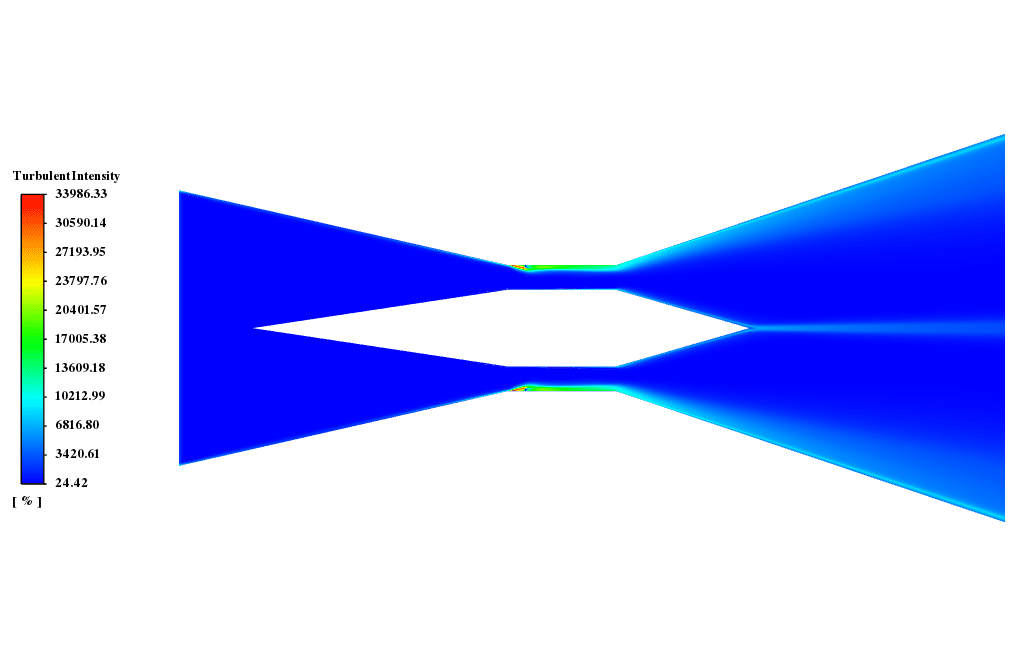
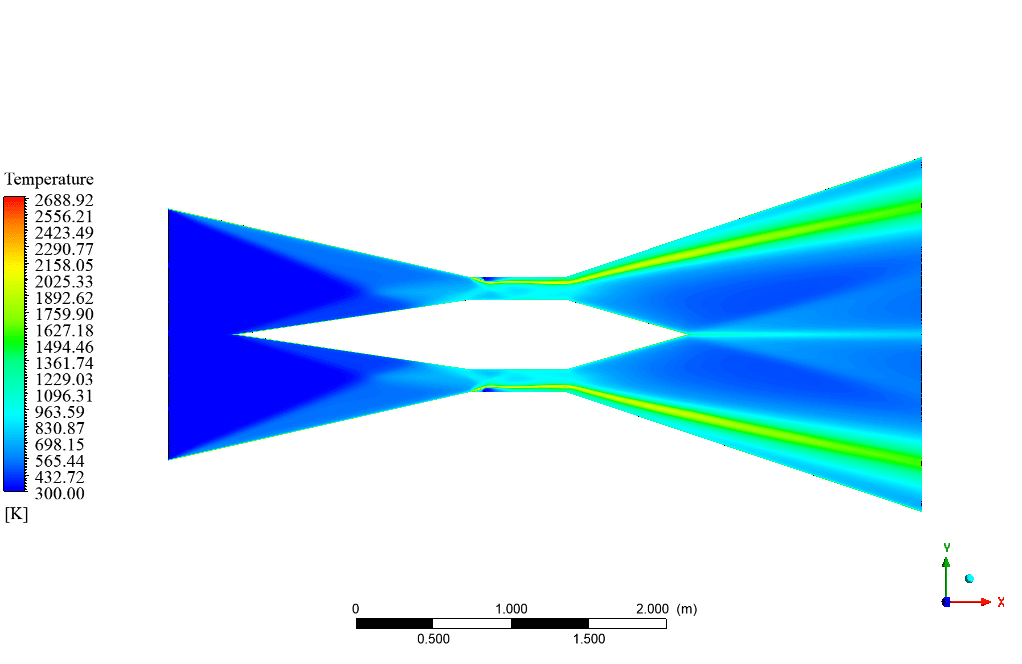
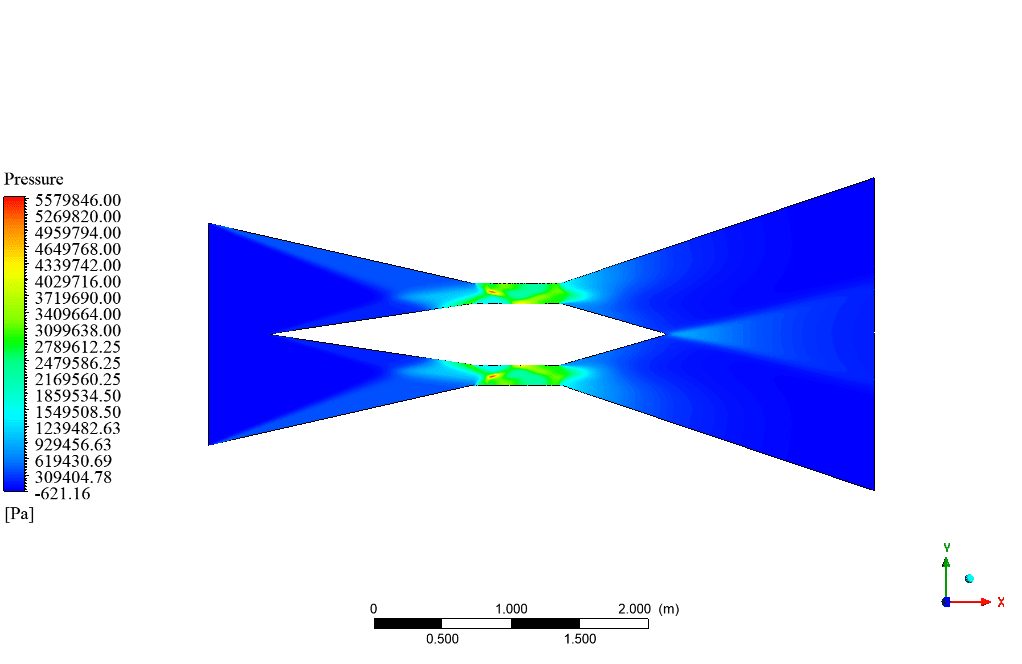
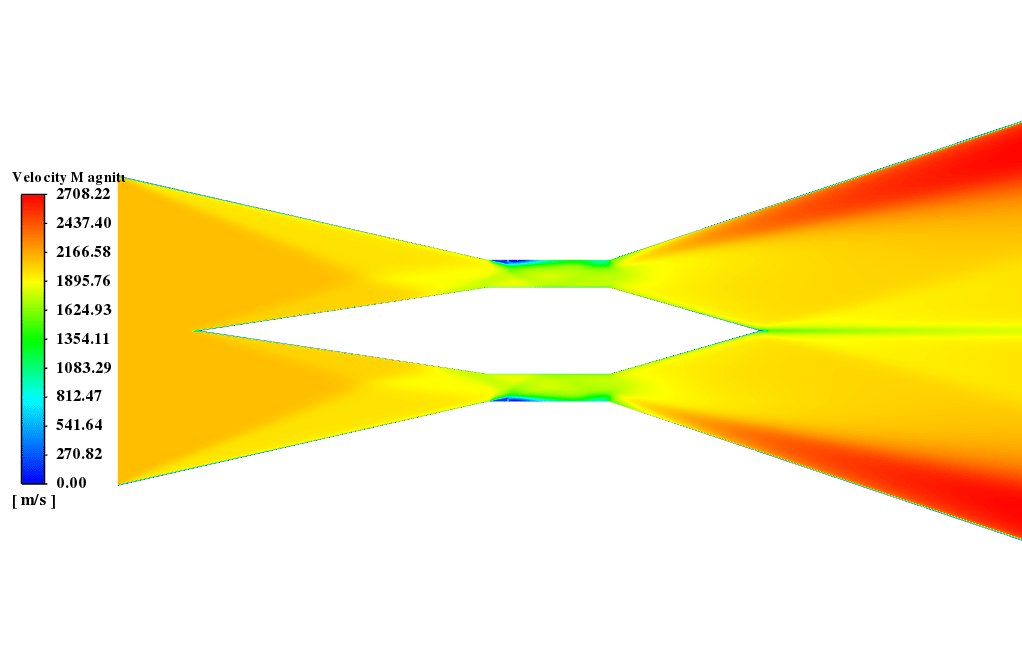
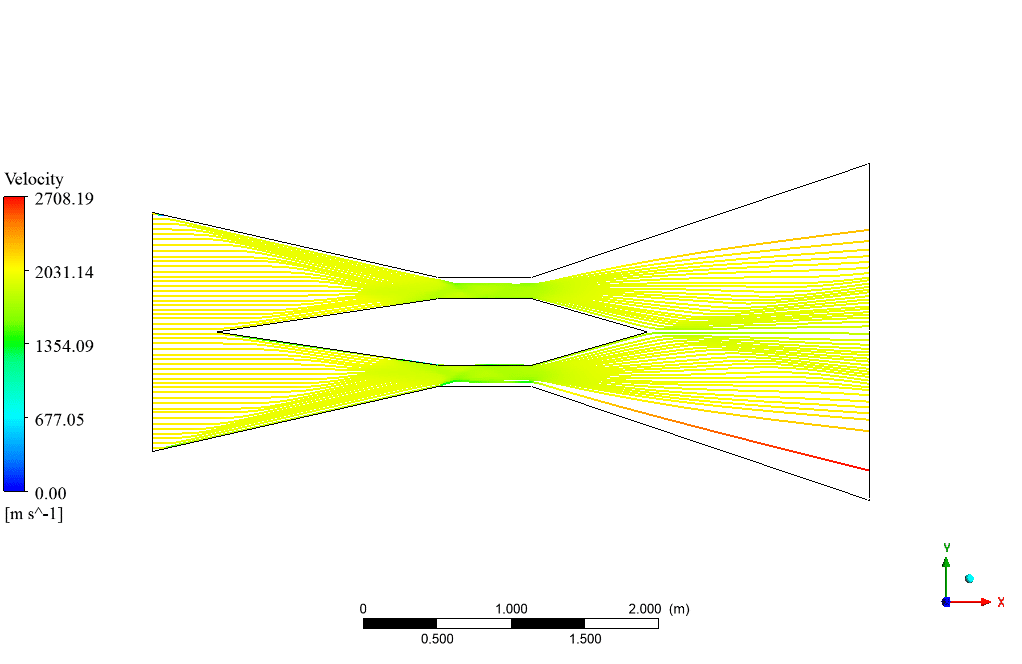
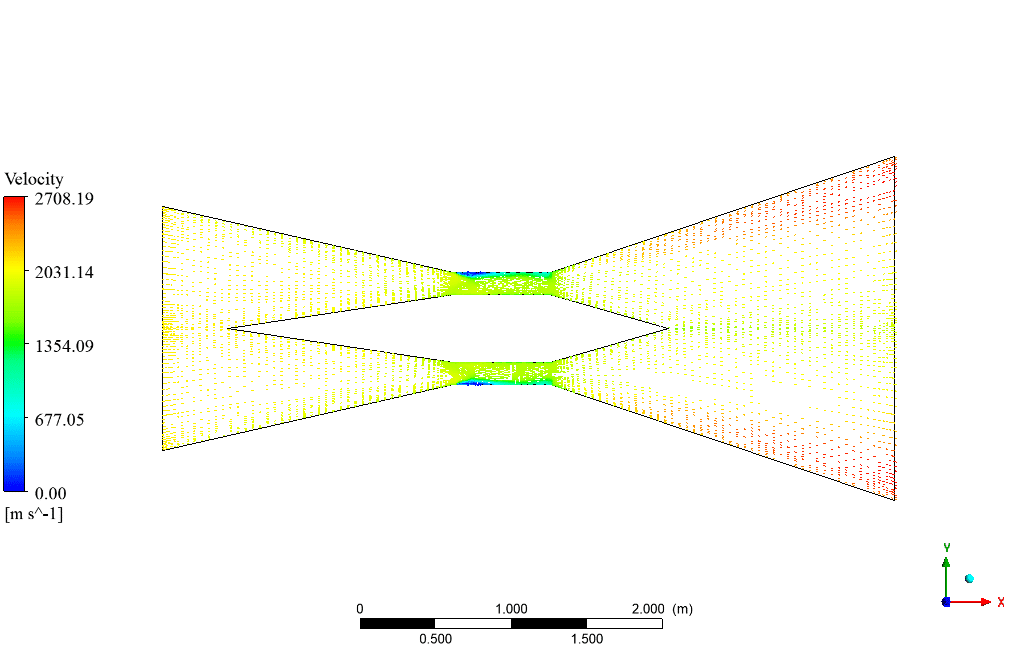
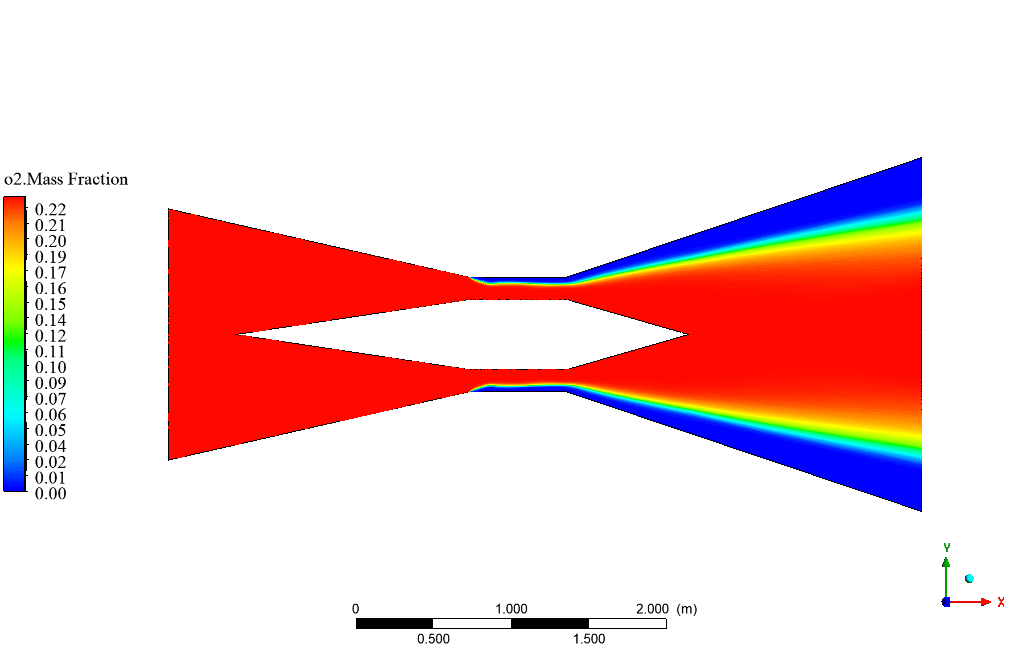
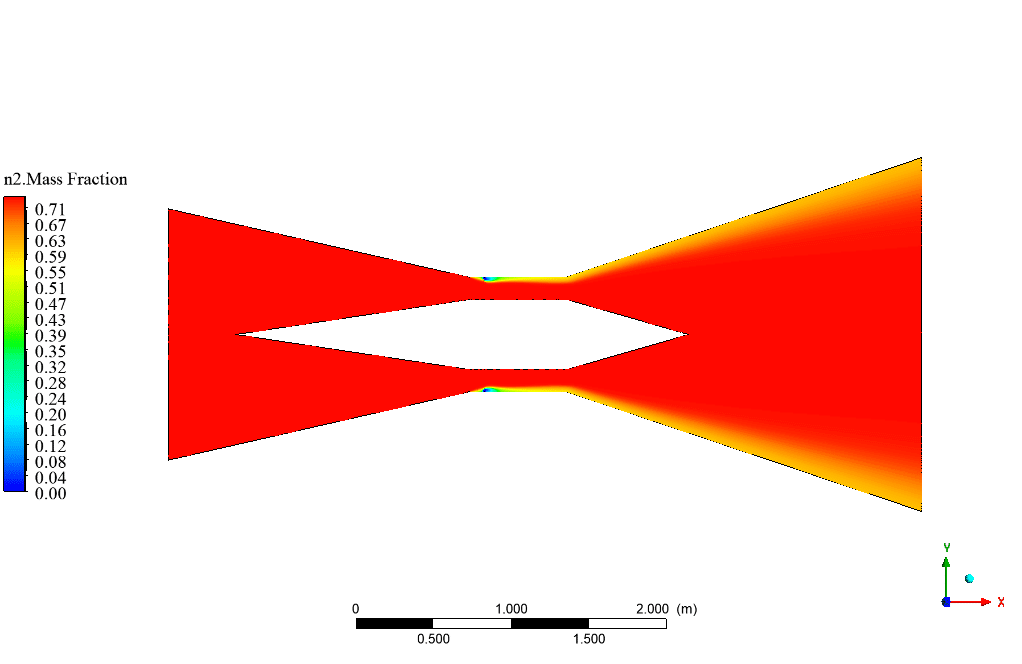
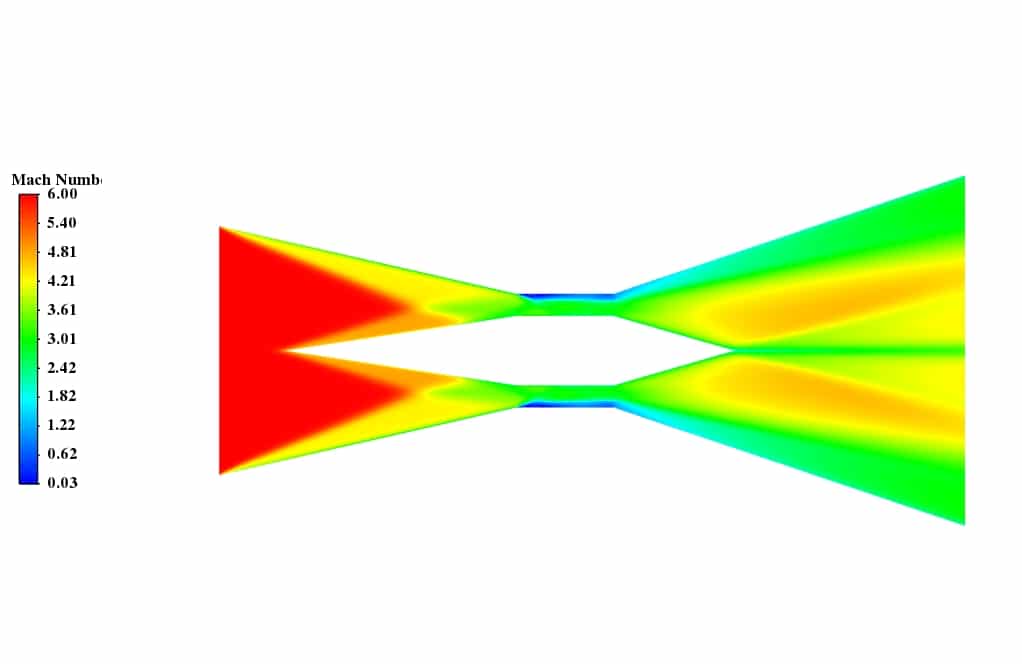
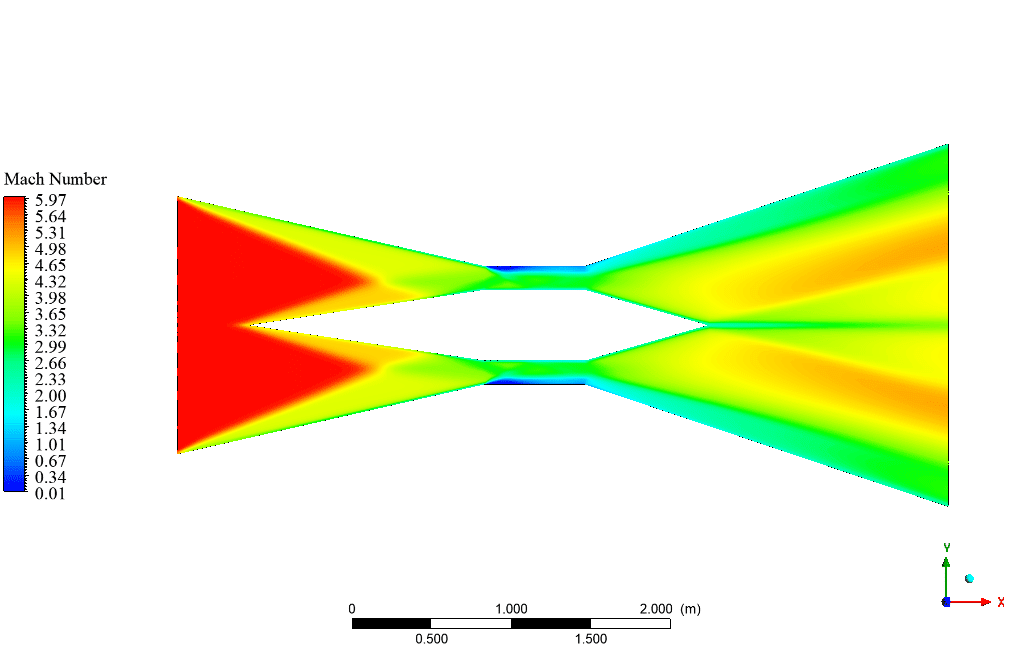
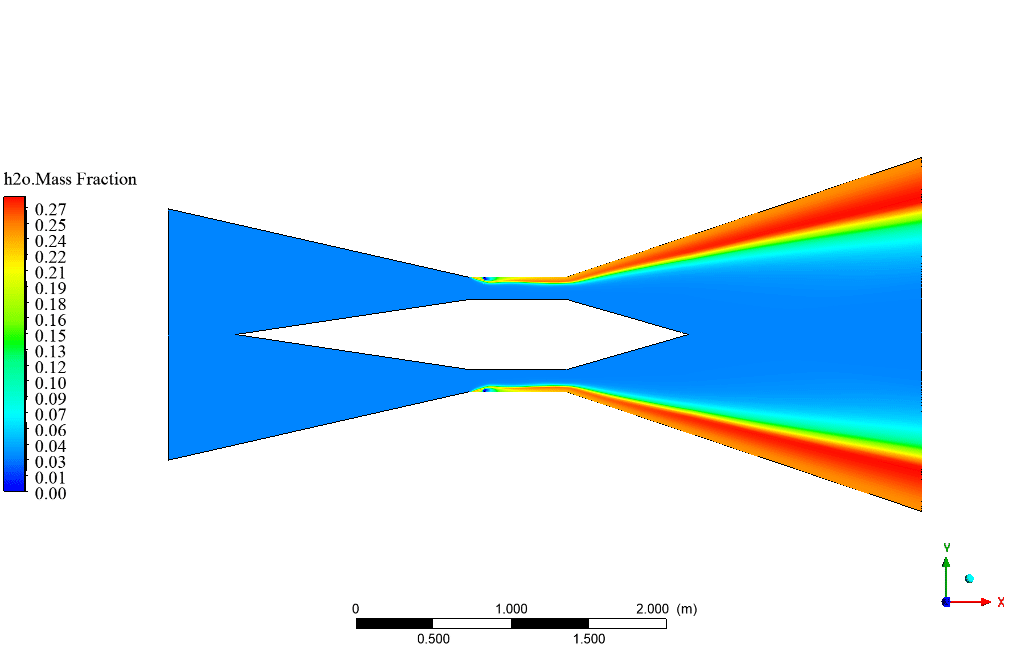
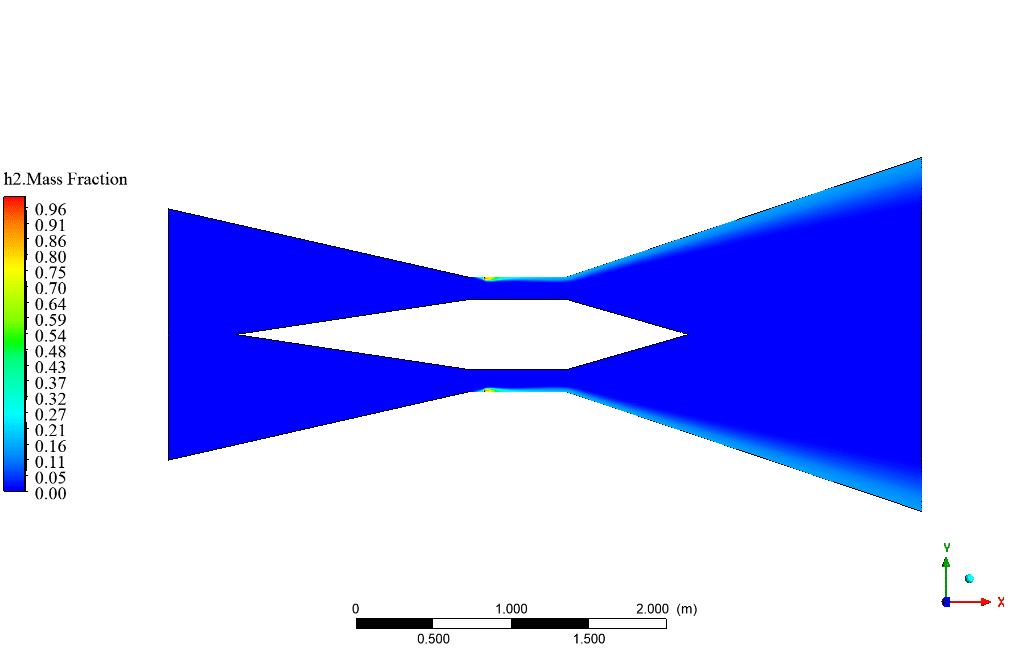
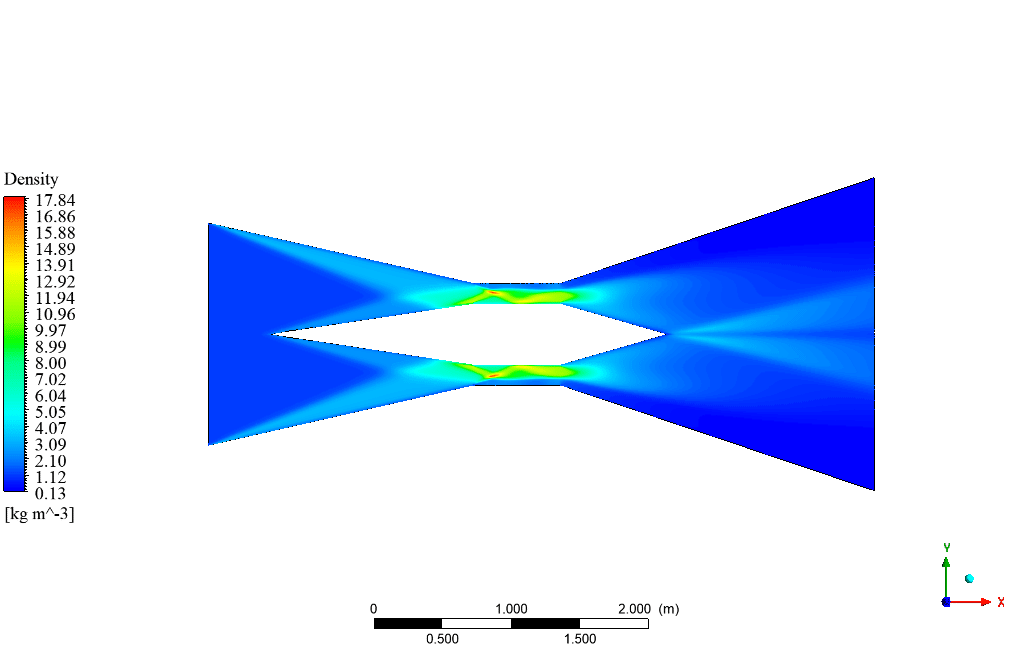


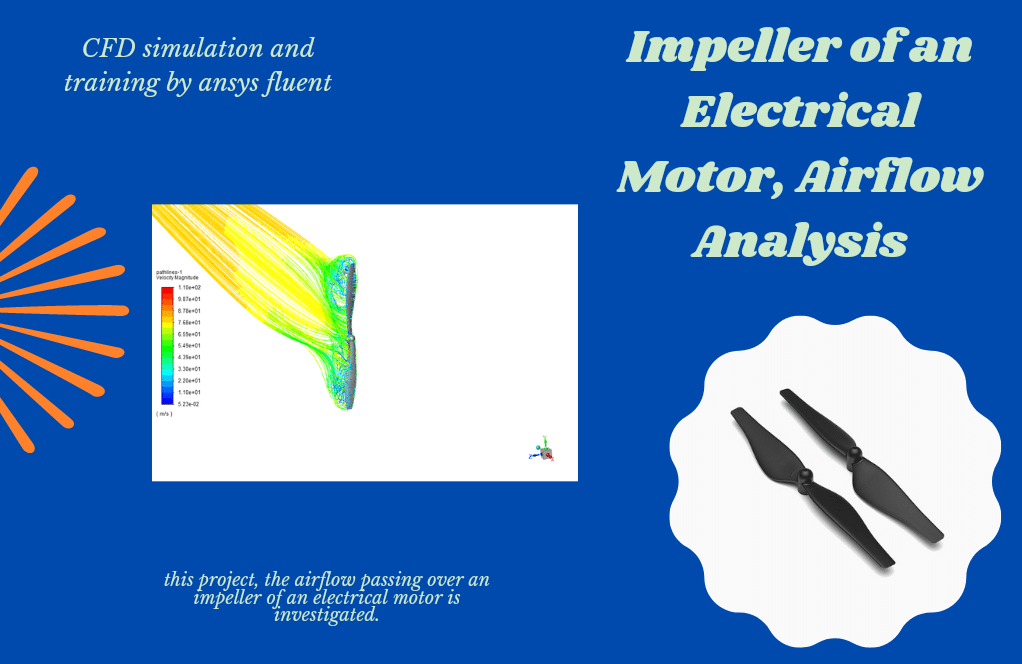
Mariano Stroman –
Can this package simulate the combustion process in other types of jet engines?
MR CFD Support –
This package is specifically designed for scramjet engines, but we can certainly accommodate your needs for other types of jet engines
Gonzalo Konopelski –
Hey, does this package include viscous heating effects?
MR CFD Support –
Absolutely! Our package takes into account viscous heating effects which are significant in hypersonic flows.
Paolo Jones –
What kind of support do you provide if I encounter issues while using the simulation package?
MR CFD Support –
We offer comprehensive support to ensure you have a smooth experience. Our team is always ready to assist you.
Mrs. Rosella Shields MD –
I am interested in the numerical methods used in this simulation. Can you provide more details?
MR CFD Support –
Certainly, our simulations utilize a variety of numerical methods, including finite volume and finite element methods. We’re open to discussing these in more detail if you’re interested.
Kendrick Pfeffer –
I was wondering how the species transport model and volumetric sub-model work in the simulation of hypersonic combustion?
MR CFD Support –
In the simulation, the species transport model is employed to account for the mixing of reactants and products in the flow, whereas the volumetric sub-model is utilized for simulating the actual combustion reaction happening throughout the flow. These models work in tandem to replicate the chemical reactions and heat release, essential for accurately simulating hypersonic combustion within a scramjet.
Monroe Hamill III –
I’m curious to know how the introduction of hydrogen in the combustion chamber impacts the overall performance of the scramjet—does it significantly improve thrust, and how is that demonstrated in the simulation results?
MR CFD Support –
The introduction of hydrogen as a fuel in the combustion chamber significantly impacts the scramjet’s performance by dramatically increasing the combustion temperature, which then contributes to higher exhaust velocities and thrust. The CFD simulation results demonstrate this through the high-temperature contours that exceed 4000 K, especially downstream of the combustion chamber where the hydrogen is injected and combusts with the incoming air, resulting in hypersonic expansion and increased thrust.
Allison Langosh –
I’m curious, how is hydrogen fuel introduced into the supersonic air stream, and how is it ignited?
MR CFD Support –
In this simulation, hydrogen fuel is introduced into the supersonic air stream at the section where the Mach number is around 1, which is often referred to as the throat or isolator of the combuster. The hydrogen is injected at speeds above Mach 1 to ensure effective mixing with the supersonically-moving air. Ignition occurs due to the high temperature and pressure inside the combustion chamber, which are beyond the ignition point of the hydrogen-air mixture. This phenomenon is captured realistically by activating the species transport model and reacting flow simulation within ANSYS Fluent, which computes the combustion process in conjunction with the fluid flow equations.
Dr. Emelie Effertz –
I’m fascinated by the hypersonic combustion process/fuel-air reaction you’ve detailed. Could you explain how viscous heating affects combustion efficiency in these extreme conditions?
MR CFD Support –
Viscous heating has a significant effect on the efficiency of combustion in scramjets operating at hypersonic speeds. As airflow over the surfaces generates friction, this friction heats up the gases, which enhances the combustion process by providing additional energy required for fuel molecules to react with the oxidizer. As such, controlling and optimizing viscous heating is crucial for maximizing combustion efficiency in these extreme flight conditions.
Prof. Vito Lubowitz DDS –
I’ve been searching for a course that explains hypersonic combustion effects in detail. Does this CFD project cover topics like shock waves and boundary layer interactions?
MR CFD Support –
Yes, this CFD training project comprehensively covers the essential phenomena of hypersonic flight, including shock waves and boundary layer interactions. By completing this course, you’ll gain insights into these complex aerodynamic effects and understand their impacts on scramjet performance.
Laurel Kreiger –
The description of the Hypersonic Combustion in Scramjet simulation is detailed and informative! The integration of viscous heating to observe the effect of high speed on temperature is particularly impressive. The choices of species transport model and k-epsilon for turbulence show a sophisticated approach to capturing the complicated phenomena in a scramjet. Well done on executing such a complex simulation with clarity.
MR CFD Support –
Thank you for your positive review! We are thrilled to hear that the simulation met your expectations and that you appreciated the detailed setup, including model choices and the integration of viscous heating. It’s always rewarding to see our users acknowledge the effort put into ensuring our simulations are both accurate and informative. If you have any further feedback or require assistance with other simulations, please don’t hesitate to reach out. Thank you for choosing our learning products!
Dr. Bo Little –
Can you explain how hydrogen is injected into the flow within the scramjet model and what impact it has on the overall combustion process?
MR CFD Support –
In the simulation, hydrogen is injected into the flow at the point where the Mach number reaches 1 within the nozzle. This means that the hydrogen is introduced at supersonic speeds. During its injection, it combusts with the incoming air due to high temperatures and speeds, significantly contributing to the scramjet’s thrust. The combustion increases the flow’s temperature and, therefore, its volume, resulting in increased exhaust speed—this acts to provide additional thrust for the scramjet.
Meggie Gerlach –
I found the velocity changes across different sections of the scramjet intriguing. Can you explain how the simulation showcases this change in velocity, especially at the combustion portion of the scramjet?
MR CFD Support –
Absolutely, the simulation provides detailed insights into the velocity changes. It’s designed to showcase the gradual deceleration of the airflow to a Mach number of 1 at the midpoint of the engine’s nozzle. At this location, hydrogen is injected, initiating combustion and expanding the gases. This process increases the gas velocity again, propelling it towards the outlet at a much higher speed. The contours and vectors generated in the simulation effectively illustrate this dynamic change throughout the scramjet.
Alda Hayes –
The training material sounds comprehensive. Everything is well-explained and the CFD project on Hypersonic Combustion in a scramjet seems very fascinating, especially the intricacies of modeling viscous heating and its impact on combustion in hypersonic conditions.
MR CFD Support –
Thank you for your positive feedback! We’re delighted to hear you found the CFD project on Hypersonic Combustion in a scramjet informative and fascinating. We take pride in providing detailed simulations to help better understand the complexities of hypersonic combustion. Your appreciation motivates us to keep up the good work!
Mrs. Samantha Smith V –
The product truly enhanced my understanding of hypersonic combustion in scramjet engines and the importance of viscous heating. The visualization of simulation results such as temperature and Mach numbers provided clear insights. I appreciate the detailed explanation and methodology!
MR CFD Support –
Thank you for your positive review! We’re thrilled to hear that our simulation has successfully conveyed the complexities of hypersonic combustion in scramjets and the effects of viscous heating. If you have any more questions or need further assistance, please feel free to reach out!
Rahul Zboncak –
The Hypersonic Combustion in Scramjet with Viscous Heating project provided insights that exceeded my expectations for understanding scramjet combustion dynamics at high Mach numbers. The CFD results particularly highlighted the temperature and velocity changes in the scramjet, which are critical for designing efficient hypersonic vehicles. I’m impressed with the level of detail that could be simulated using ANSYS Fluent.
MR CFD Support –
Thank you for your kind review! We are thrilled to hear that our Hypersonic Combustion in Scramjet with Viscous Heating project exceeded your expectations and provided detailed insights into combustion dynamics at hypersonic speeds. We take pride in offering high-quality simulations that help our users delve deep into the complexities of aerospace engineering and design. Your feedback is greatly appreciated and motivates us to continue developing valuable and informative CFD simulations. If you have any more questions or need further assistance, please don’t hesitate to reach out!
Carolina Wehner V –
This training demonstrates the extreme conditions of hypersonic combustion very well. The explanation of various physical phenomena and the processes inside the scramjet are quite comprehensive. Great job in detailing the methodology and showcasing the importance of combustion modeling in such high-speed applications.
MR CFD Support –
Thank you for your positive feedback on our Hypersonic Combustion in Scramjet with Viscous Heating CFD Simulation ANSYS Fluent Training. We’re thrilled to hear that the detailed methodology and the highlights on the importance of accurate combustion modeling in high-speed applications were insightful and valuable to your learning experience.